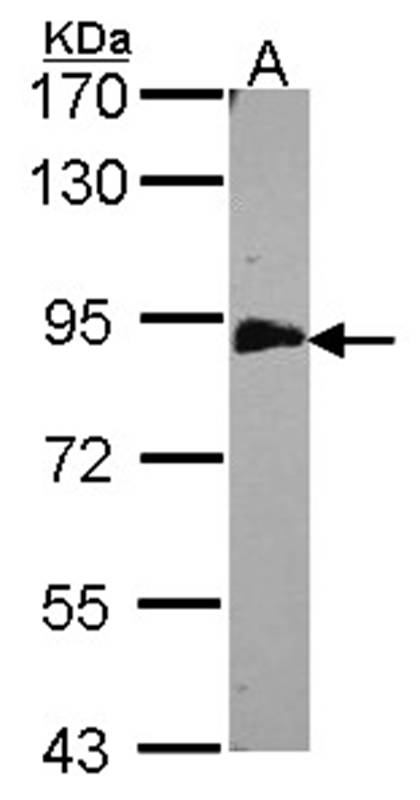EML1 antibody [C3], C-term
GTX100252
ApplicationsImmunoFluorescence, Western Blot, ImmunoCytoChemistry, ImmunoHistoChemistry, ImmunoHistoChemistry Paraffin
Product group Antibodies
TargetEML1
Overview
- SupplierGeneTex
- Product NameEML1 antibody [C3], C-term
- Delivery Days Customer9
- Application Supplier NoteWB: 1:500-1:3000. ICC/IF: 1:100-1:1000. IHC-P: 1:100-1:1000. *Optimal dilutions/concentrations should be determined by the researcher.Not tested in other applications.
- ApplicationsImmunoFluorescence, Western Blot, ImmunoCytoChemistry, ImmunoHistoChemistry, ImmunoHistoChemistry Paraffin
- CertificationResearch Use Only
- ClonalityPolyclonal
- Concentration1 mg/ml
- ConjugateUnconjugated
- Gene ID2009
- Target nameEML1
- Target descriptionEMAP like 1
- Target synonymsBH, ELP79, EMAP, EMAP-1, EMAPL, echinoderm microtubule-associated protein-like 1, echinoderm microtubule associated protein like 1
- HostRabbit
- IsotypeIgG
- Protein IDO00423
- Protein NameEchinoderm microtubule-associated protein-like 1
- Scientific DescriptionHuman echinoderm microtubule-associated protein-like is a strong candidate for the Usher syndrome type 1A gene. Usher syndromes (USHs) are a group of genetic disorders consisting of congenital deafness, retinitis pigmentosa, and vestibular dysfunction of variable onset and severity depending on the genetic type. The disease process in USHs involves the entire brain and is not limited to the posterior fossa or auditory and visual systems. The USHs are catagorized as type I (USH1A, USH1B, USH1C, USH1D, USH1E and USH1F), type II (USH2A and USH2B) and type III (USH3). The type I is the most severe form. Gene loci responsible for these three types are all mapped. Two transcript variants encoding different isoforms have been found for this gene. [provided by RefSeq]
- Storage Instruction-20°C or -80°C,2°C to 8°C
- UNSPSC12352203
References
- Mutations in Eml1 lead to ectopic progenitors and neuronal heterotopia in mouse and human. Kielar M et al., 2014 Jul, Nat NeurosciRead more




